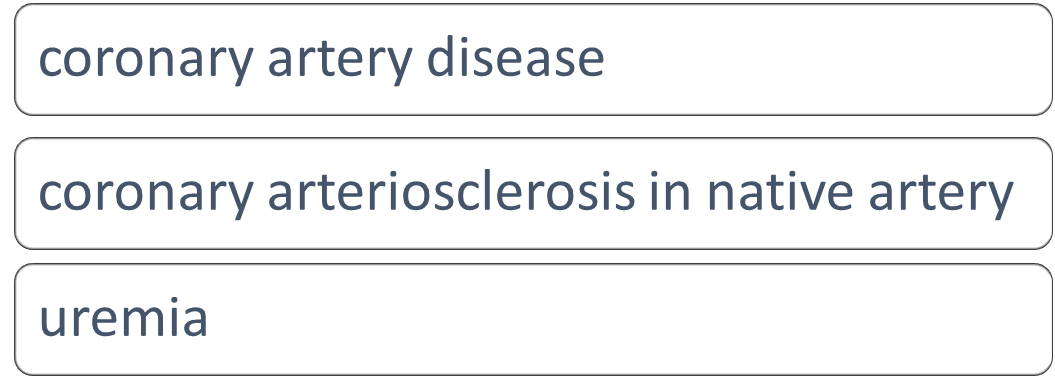Problem Discovery
In this tutorial, we will employ the Discovery API to search the Electronic Health Record (EHR) for chronic conditions that are not documented on the patient problem list.
This capability is licensed under IMO Discovery.
What problem can you address with this API?
Patients may have risks and gaps in care when unresolved or recurring issues from previous encounters are not being actively treated. That’s why the Discovery API searches the EHR for chronic health issues not documented on the patient’s problem list. By revealing these potential areas of treatment, providers now have opportunities to monitor care through reporting, and they can even capture outlying HCCs and create a plan for timely treatment. Furthermore, adding these conditions to the problem list provides a complete picture of the patient’s health story and leads to better outcomes from decision support, population health, quality reporting, and numerous other use cases.

Setup
Start with the relevant EHR information required to meet your data needs.
List examples:
Problem List:

Visit Diagnosis (prior encounters):

Authentication
To call the Discovery endpoint, use the access token obtained from our OAuth2 authorization server.
How to: Perform a search for undocumented problems
This request will initiate a search for health conditions which may be missing from the problem list.
Description: Search the problem list and encounters for undocumented problems
Request:
curl --location --request POST 'https://api-sandbox.imohealth.com/discovery/encounters' \
--header 'Authorization: {{UPDATE_BEARER_TOKEN_HERE}}' \
--header 'Content-Type: application/json' \
--data-raw '{
"properties": {
"provider_id": "provider123",
"patient_id": "pateint123"
},
"specialty": "string",
"problems": [
{
"id": "problem123",
"title": "Diabetes",
"entry_date": "2024-05-08T05:42:49.266Z",
"onset_date": "2022-08-29T18:15:22.433Z"
}
],
"diagnoses": [
{
"id": "diagnoses123",
"title": "Coronary arteriosclerosis in native artery",
"onset_date": "2023-08-29T18:15:22.433Z"
}
]
}'
Response:
{
"discovery_problems": [
{
"id": "da480c4c-64fc-4d5a-b829-6eabf19e68d8",
"title": "Coronary arteriosclerosis in native artery",
"lexical_code": "1712021",
"lexical_title": "Coronary arteriosclerosis in native artery",
"icd10cm": [
{
"code": "I25.10",
"title": "Atherosclerotic heart disease of native coronary artery without angina pectoris"
}
],
"snomed": [
{
"code": "53741008",
"title": "Coronary arteriosclerosis"
}
],
"details": {
"category_code": "1068676071",
"category_title": "Cardiac and Vasculature",
"hcc_category_code": "0",
"hcc_category_code_next": "0",
"specialty_codes": [
"2411",
"2428",
"2770857527"
]
}
}
],
"related_problems": []
}Summary: Discover Problems using Encounters
- You sent a call to the Discovery (Encounters) API with a goal to find health conditions not currently found on the problem list.
- The API searched the EHR for undocumented problems by referencing data indicated in prior encounters.
- You can now view the suggestions returned by the API and determine a path forward for the health issues presented. For example: "Coronary arteriosclerosis in native artery" is suggested as a condition, and it can be added to the current problem list for further evaluation, monitoring, and treatment.
- It excludes the problems which are already in Problem List
